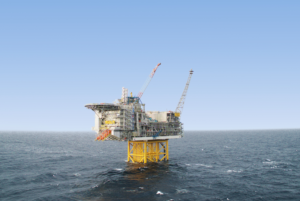Drilling & Completion Tech Digest
Technology increases accessible reserves on Ivar Aasen
Stavanger-based Fishbones recently installed its completion system in a horizontal well on the Aker BP-operated Ivar Aasen field in the North Sea to increase accessible reserves. The well targeted the “alluvial fan” formation below the main producing formation on the field, which is a 25-m thick shaly, layered sandstone formation. A liner with 20 subs, in combination with sand screens, was deployed with the objective of connecting the layered formation while maintaining sand control. Further wells with this system are being considered.

Meanwhile, on Aker BP’s Valhall field, work that the company did using Fishbones’ jetting system in 2018 is showing strong results, according to the service provider. Last year it completed simultaneous jetting of 72 laterals with solids control, installing a slotted needles jetting system in a pilot well. Analysis of production results shows that productivity of the pilot well falls within the trend of proppant fractured producers on the same field.
After the initial production period in Q1 2019, the well stopped flowing to chalk influx, which is common in Valhall wells due to the soft nature of the chalk. The chalk was recently cleaned out by coil-tubing intervention, and the well is back on production. Aker BP plans to continue producing the well at low drawdown. The well is flowing at 800 bbl/day of oil.
Optical measurements help to execute mooring inspection
BP recently used an optical chain measurement system (CMS) and a new automated edge tracking software to execute a mooring inspection campaign offshore Angola. The technologies were provided by Welaptega, and the inspection was done on the PSVM FPSO, situated in Block 31 offshore Angola. The PSVM project is the deepest deepwater project in Africa.

Unlike traditional mechanical chain measurement tools, the use of optics allows for diameter measurements to be taken from video frame grabs rather than requiring equipment to grip onto the chain. The tool gathers three measurements from a single placement. This means that deployment time is reduced, and the technology can complete an inspection 40% faster than traditional methods, according to Welaptega.
The CMS is made up of four video cameras depth rated for 3,000 m, integrated LED lighting control, and a topside digital recording system that collects high-quality video of the measurement locations. The edge tracking software then allows the data to be processed and measurement results delivered offshore.
Optimization app helps drilling of record well on Alaska’s north slope
A supermajor recently used Corva’s drilling optimization technology to drill a record-breaking extended-reach well in the National Petroleum Reserve of Alaska’s North Slope. Extreme torque and pressure conditions in extended-reach wells can create complex challenges to drilling long lateral wellbores. The operator leveraged real-time insights to rapidly respond to hazardous conditions while drilling and tripping pipe.
In July, the undisclosed operator set the onshore North American drilling record for the longest lateral well with the completion of a 32,468-ft well in Alaska, according to Corva. The operator leveraged Corva’s T&D mobile application, which automates data collection and analysis while drilling. By monitoring hole conditions in real time, the drilling team can rapidly adjust weight on bit and torque transfer as needed to prevent stuck pipe and twist-offs. The app also provided higher torque and drag data frequency (one point per stand of pipe) while tripping in casing, enabling the crew to rapidly identify trends and spot deteriorating hole conditions.
In addition, the operator wanted to prevent dangerous pressure conditions when tripping BHAs. Corva’s Surge and Swab app was used to continuously analyze downhole pressure and prevent kicks while tripping out BHAs. The app also provided real-time insight into high-pressure conditions while tripping in BHAs, enabling the operator to optimize trip time and avoid damage to equipment, wellbore and reservoir.
Intelligent system deployed on Clair Ridge
BP recently deployed Baker Hughes’ SureCONNECT downhole intelligent wet-mate system in the Clair Ridge development offshore Scotland, marking the world’s first multi-trip completion installation with full-bore fiber-optic capability. This improves surveillance data and well-performance functionality, with the goal of ultimately introducing fiber-optics to subsea wells.




